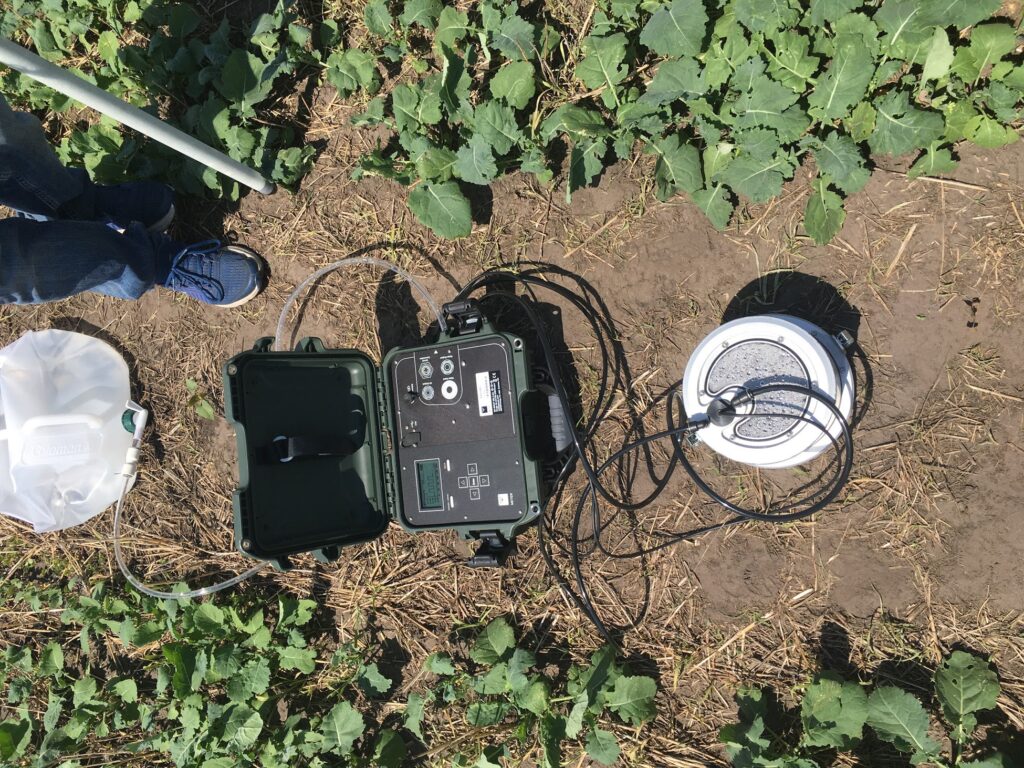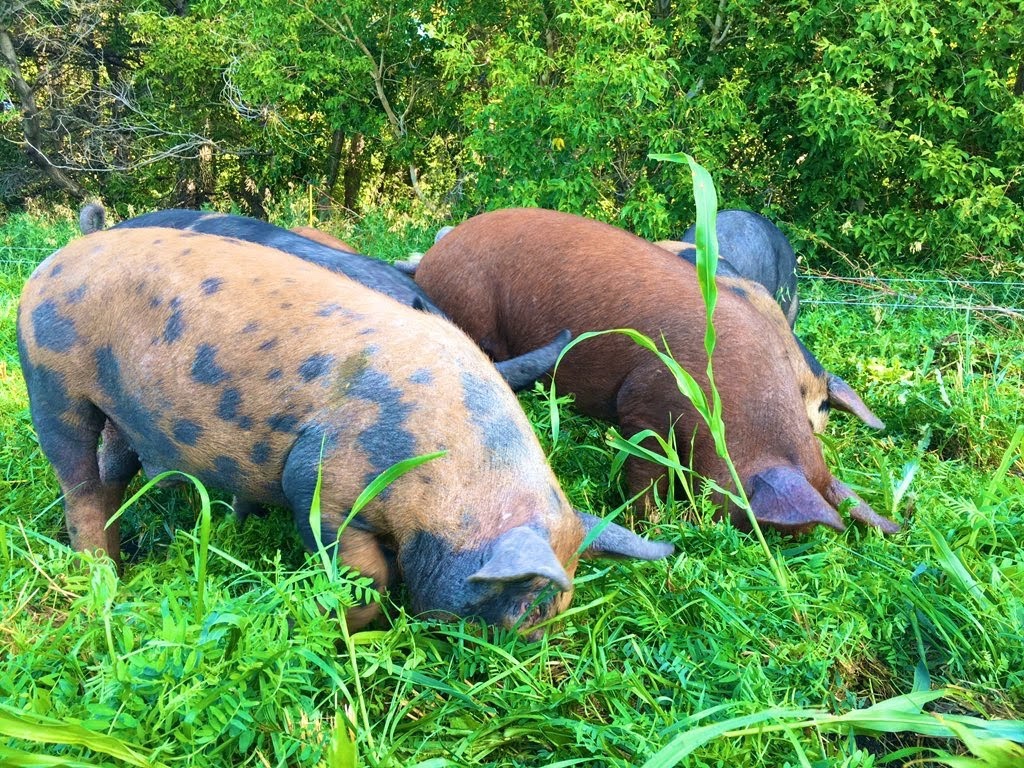By: Callum Morrison, Rhineland resident and PhD student in the Department of Plant Science at The University of Manitoba
Cover crops seem to be a growing topic of discussion among farmers and agronomists these days. Despite being a relatively niche endeavour in the Canadian Prairies, they are quickly gaining popularity with local farmers. With growing interest, many people are eager to learn what cover crops are being grown, how many farmers are growing them, and how farmers are fitting them into their rotations. A new project at the University of Manitoba is surveying farmers across the Prairies to be able to these questions.

What is a Cover Crop?
Cover crops are grown at times when a cash crop is not growing, such as in the fall after harvest. The aim of cover crops is to benefit the soil, the environment, and improve the subsequent crop. A common example would be planting a fall rye cover crop in late August or early September following harvest of a cereal grain crop. A cover crop may also start life as an intercrop, with the cover crop being broadcast into a standing cash crop. This has been one way that farmers get around our short Prairie growing season. These types of fall shoulder season cover crops will grow through the fall until freeze up. If the cover crop can overwinter, they will also grow next spring until they are terminated using herbicides or tillage before planting next year’s crop.
Full season cover crops have also being used to tackle problem soils. A full season cover crop may involve a farmer taking an entire field or targeted areas within a field out of annual cash crop production to improve the soil. Fruit growers may use full season cover crops in between rows of fruit crops. Farmers with fields that were too wet for planting may plant a cover crop to dry out a field and improve the soil for planting the following year. Full season cover crops are popular with cattle farmers as they can be grazed at the end of the season. This not only provides extra feed for hungry cows but also adds manure to feed hungry soil microbes.

Why are Manitoban Farmers Using Cover Crops?
There are many reasons why a farmer may wish to grow a cover crop in Manitoba. There are dozens of species of cover crops used across the Prairies, with each having its own set of ‘skills’ which a farmer can use. In this way cover crops are like a toolbox, with some working very well to achieve one goal, and others best adapted to reach another. Framers pick a cover crop by identifying what goal they want to achieve, and then choosing what cover crop species or mix would fit with their existing cash crop agronomy and local conditions. It is really a decision that has to be made at the local level.
All cover crops improve soil health in some measure. They cover the soil and their roots anchor the soil in place, reducing wind and water erosion which can move soil particles. Soil erosion in the Prairies has been a problem over the past few years, especially for potato fields that receive a lot of tillage or edible bean and soybean fields that do not have a lot of residue after harvest. Cover crop roots also combat soil compaction, especially deep rooted species like tillage radish. When cover crop roots decay they leave these channels behind which allow air and water to move down the soil profile, improving soil aeration and water infiltration.
Every farmer wants their crops to be well ‘fed’ and selecting cover crops with this in mind can help provide subsequent cash crops with nutrients. Legume cover crops, such as peas, add nitrogen to the soil by fixing it from the atmosphere with the help of soil bacteria. Other types of cover crops are good at ‘scavenging’ any nitrogen left over from the previous season. This stores the nitrogen in cover crop tissues, and may prevent the nitrogen from being washed out of the rooting zone during heavy rains or from being lost to denitrification during wet periods and snow melt. This nitrogen may then be slowly released into the soil as the cover crop dies, releasing it in subsequent years for cash crops. Some cover crops such as flax form associations with a type of fungus living in the soil known as mycorrhiza. This is valuable for helping plants to access phosphorus from the soil.
Cover crops also add carbon to soils with both their shoot and roots. Cover crops can feed hungry microbes at a time of year when our typical crop plants are not growing and over time they may increasing soil organic matter. This leads to greater biological activity, and increased numbers of earthworms and other beneficial organisms. In these many ways cover crops may help farmers improve soil, manage excess water, reduce tillage, save money on fertilisers, help reduce nutrients from reaching our lakes and rivers and thus help protect our wildlife and beaches.

How Are Prairie Farmers Using Cover Crops?
Before initiating the Prairie Cover Crop Survey in 2019, limited information was available about to how farmers in Western Canadian were using cover crops. This has held cover cropping back as farmers and stakeholders do not have enough data specific to the Prairies to help with decision making and adapting local programs. Limited information also makes it hard for farmers that are interested in cover crops to find information about how others have been using cover crops in their area. Many Prairie farmers are turning to information from the United States where cover crops have been more widely adopted. This information is helpful, however every farmer knows how different farming is from region to region. Information about cover crops need to be available in a Prairie context so that Western Canadian farmers can tailor their use to the climate, soils, crops, and programs in our region.

Prairie Cover Crop Survey
The Prairie Cover Crop survey was launched last year by University of Manitoba Professor Dr. Yvonne Lawley and PhD student Callum Morrison. The survey will continue this fall for 2020. The survey aims to determine the extent of cover cropping across the Prairies, how and why cover crops are being used, and what research or extension projects farmers would like to see. This survey compliments agronomic research underway at the University of Manitoba Carman and Glenlea research stations as well as multiple on-farm field scale research trials across Manitoba.

Take The Survey
You can add your voice to the 2020 Prairie Cover Crop Survey by heading to our new website: https://sites.google.com/view/prairiecovercropsurvey/home You can also follow @CallumMorrisons or @YvonneLawley_UM on twitter and use the link on their pinned posts. The survey will run from October 1st 2020 – February 1st 2020. Any farmer can take part in the 2020 Prairie Cover Crop Survey. This year we want to hear both from farmers that are still considering if cover crops have a fit on their farm as well as those that were growing cover crops in 2020. This will allow us to hear from a broader range of Prairie farmers about their goals, interests, and concerns about growing cover crops.
Upcoming Release of 2019 Report
The results of the Prairie Cover Crop Survey in 2019 are being summarized in an annual report that will be released in November 2020. The report will summarize the results for the use of cover crops across the Prairies along with Maps showing where cover crops are being grown in Manitoba, Saskatchewan, and Alberta. The report will summarize the most common cover crops species and how they are established. The report will also be looking at how cover crops are being used by different farm types (organic, regenerative, and livestock) and how they are grown in rotation with major Prairie cash crops. The best way to ensure that you receive a copy of the 2019 report is to take the 2020 survey and request to be sent a copy of the survey by leaving your email address.
